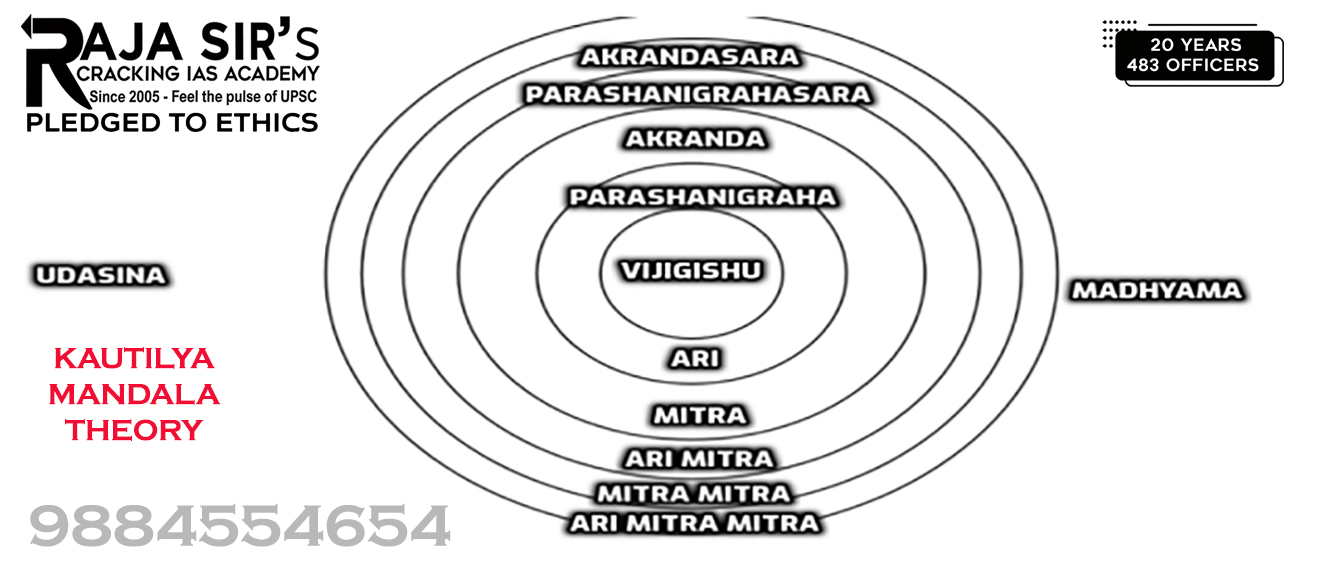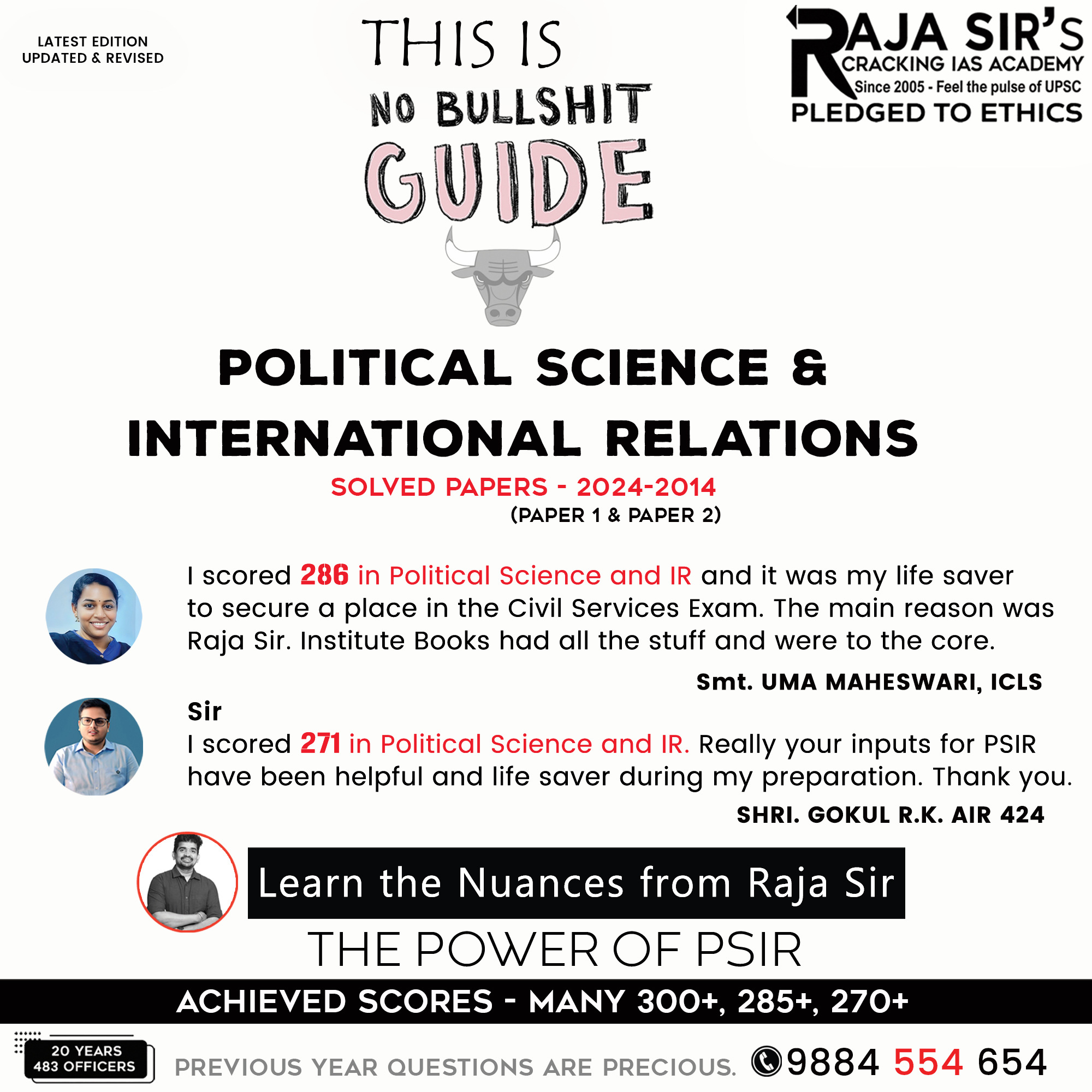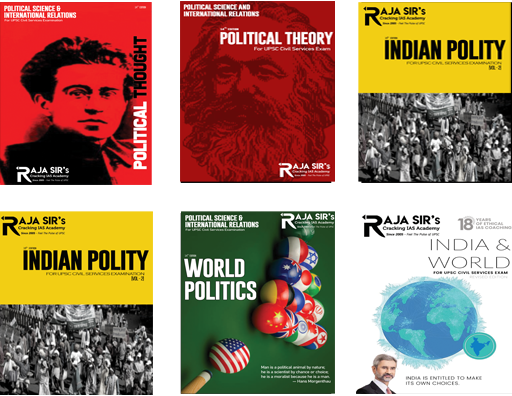- Home
- Prelims
- Mains
- Current Affairs
- Study Materials
- Test Series
 Latest News
Latest News
Critically analyze Kautilya's Mandala theory. (20 Marks). Political Science and International Relations (PSIR) - Answer Writing Practice

Kautilya treated inter-state relationship i.e., foreign policy from the point of view of Vijigishu i.e., the conquering king who was placed in the center of a Mandala. He assumed that he lived in a world of foreign relations in which one conquered or suffered conquest.
His foreign policy offered the theory that an immediate neighbouring state was an enemy and a neighbor’s neighbor, separated from oneself by the intervening enemy, was a friend. (Imagine a series of States to one''s west, and then number them starting with oneself. The States numbered 1, 3, 5, 7, and so on will likely be friends, whereas States 2, 4, 6, 8, and so on would probably be one''s enemies. The Vijigishu would, thus, affect the line of allies and enemies.)
A nation''s foreign policy always consists of preliminary movements toward war. "In this way, the conqueror should establish in the rear and in front, a circle (of kings) in his own interest, with excellences of the constituent, called the ally. And in the entire circle, he should ever station envoys and secret agents, becoming a friend of the rivals, maintaining secrecy when striking again and again. The affairs of one, who cannot maintain secrecy, even if achieved with particular success, undoubtedly perish, like a boat in the ocean."
Kautilya described a Mandala i.e., Circle of States like a wheel with the conqueror at the hub. The conception of 12 states with allies and enemies perhaps drawn from Vedic rituals. Ari the enemy, Mitra Prakriti the friend of the Vijigishu, Arimitra friend of enemy, Mitra-Mitra friend of the friend of Vijigishu and Ari mitramitra friend of the enemy''s friend were the five kings in front of the Vijigishu. Behind the Vijigishu were Parshnigraha rearward enemy, Akranda rearward friend, Parshnigraha Sara friend of the rearward enemy, Akrandastra friend of the rearward friend. The third and the fourth categories in the Mandala were the Madhyama (potential friend or enemy) and Udasina (neutral) to meet the emergencies.
It was significant that Vijigishu and Ari in the centre should have different Mandalas of the other States on the circumference of the Mandala, determined by laws of attraction and repulsion.
Kautilya argued that diplomacy was really a subtle act of war, a series of actions taken to weaken an enemy and gain advantages for oneself, all with an eye toward eventual conquest. Accordingly, the conception of Mandala was dynamic subject to the growth and development or deterioration and decay. Each one of the 12 independent Kings rules as Ari, Mitra, Madhyama and Udasina.
It was the problem for vijigishu how to manipulate the members of the Mandala to the best promotion of his own interests by all possible combinations and permutations. The Vijigishu was to overcome all the members, by means of the four expedients Sama, Dana, Bheda and Danda. However, as the universal conquest was not possible, it was necessary for the ruler to conclude alliances or observe neutrality. The possible attitude that he could adopt were Sadgunya i.e., the Six measures of Policy Sandhi (alliances). Vigraha (war), Asana (neutrality), Yana (marching), Smsraya (seeking protection/ coalition) and Dvaidibhava (duplicity).

Kautilya realized that war was an evil, and accordingly enjoined the king to resort to any policy which would ensure the harmony and solidarity of the Mandala. Alliances should be sought with good kings and consistently maintained. Peace must be maintained with equals and superiors; otherwise, it would be like ‘collision of unbaked mud vessels causing mutual destruction’, or of foot soldiers fighting elephants.
Kautilya attached greater importance to diplomatic Sangramika rather than to an armed contest. G.P. Singh correctly stated that the Mandala theory is ancient India''s most notable contribution to political theory. Kautilya, thus, underscored this principle of foreign policy as a timeless truth in his Arthasastra.












 General Studies
General Studies